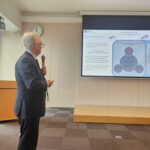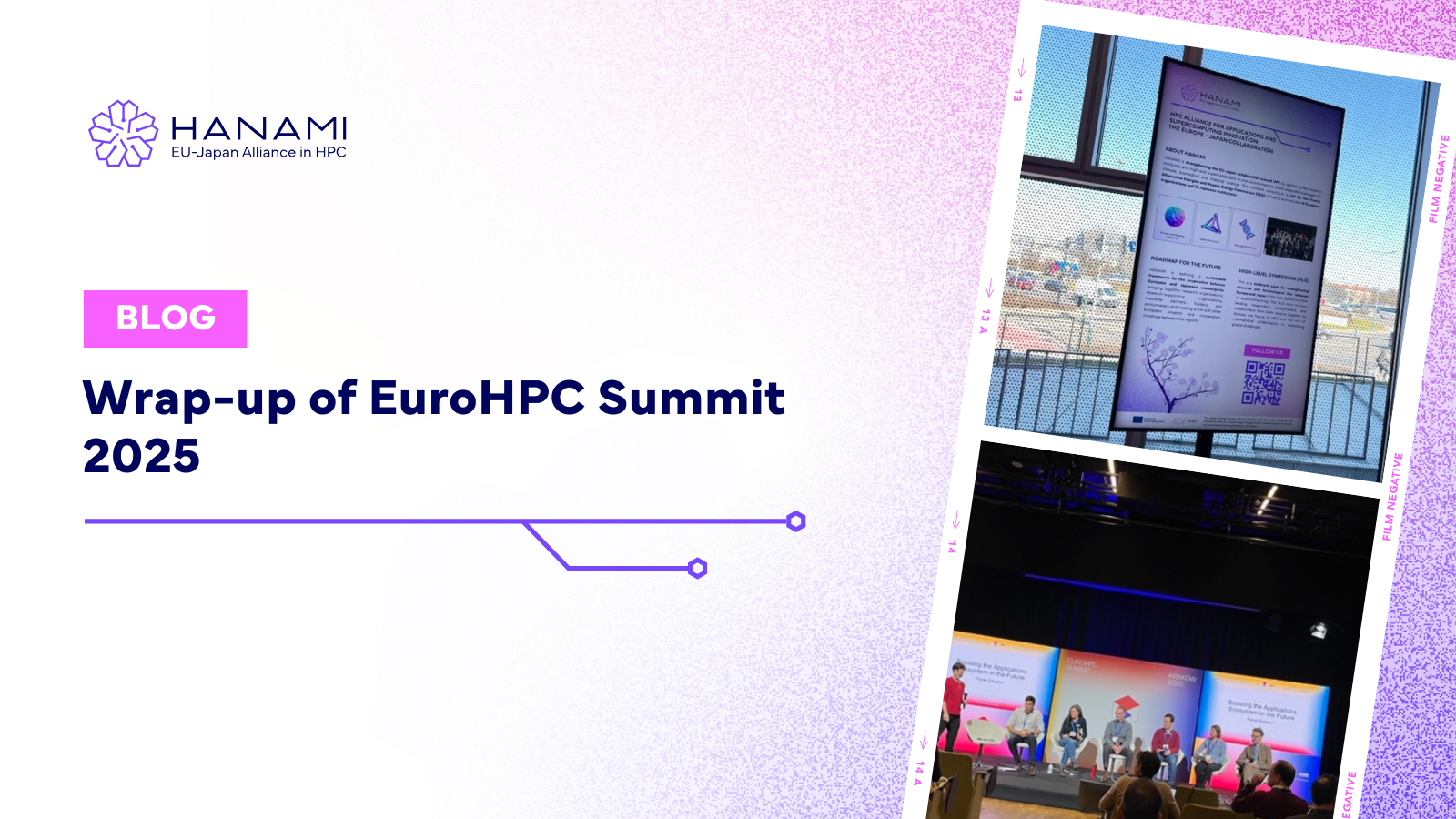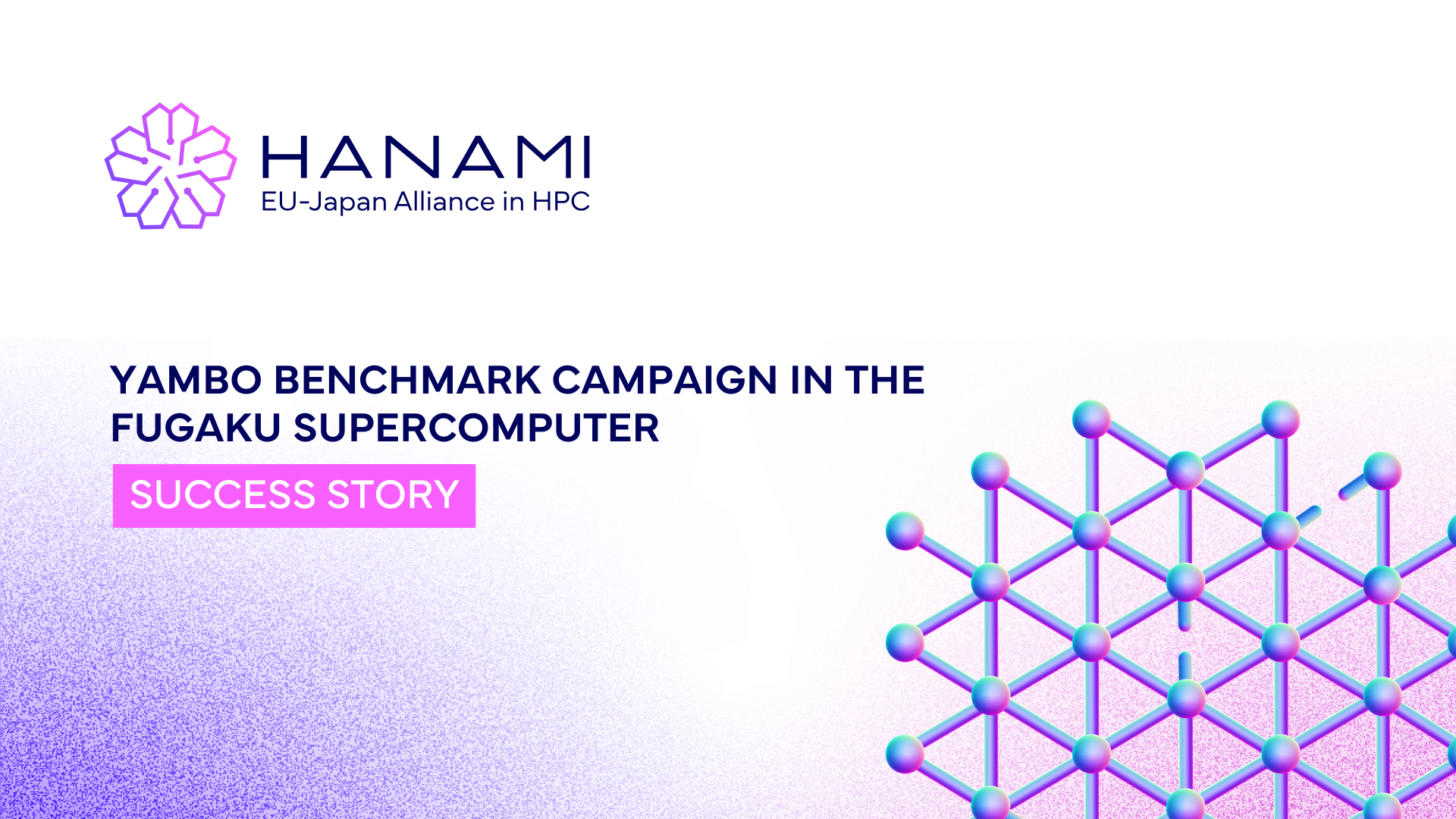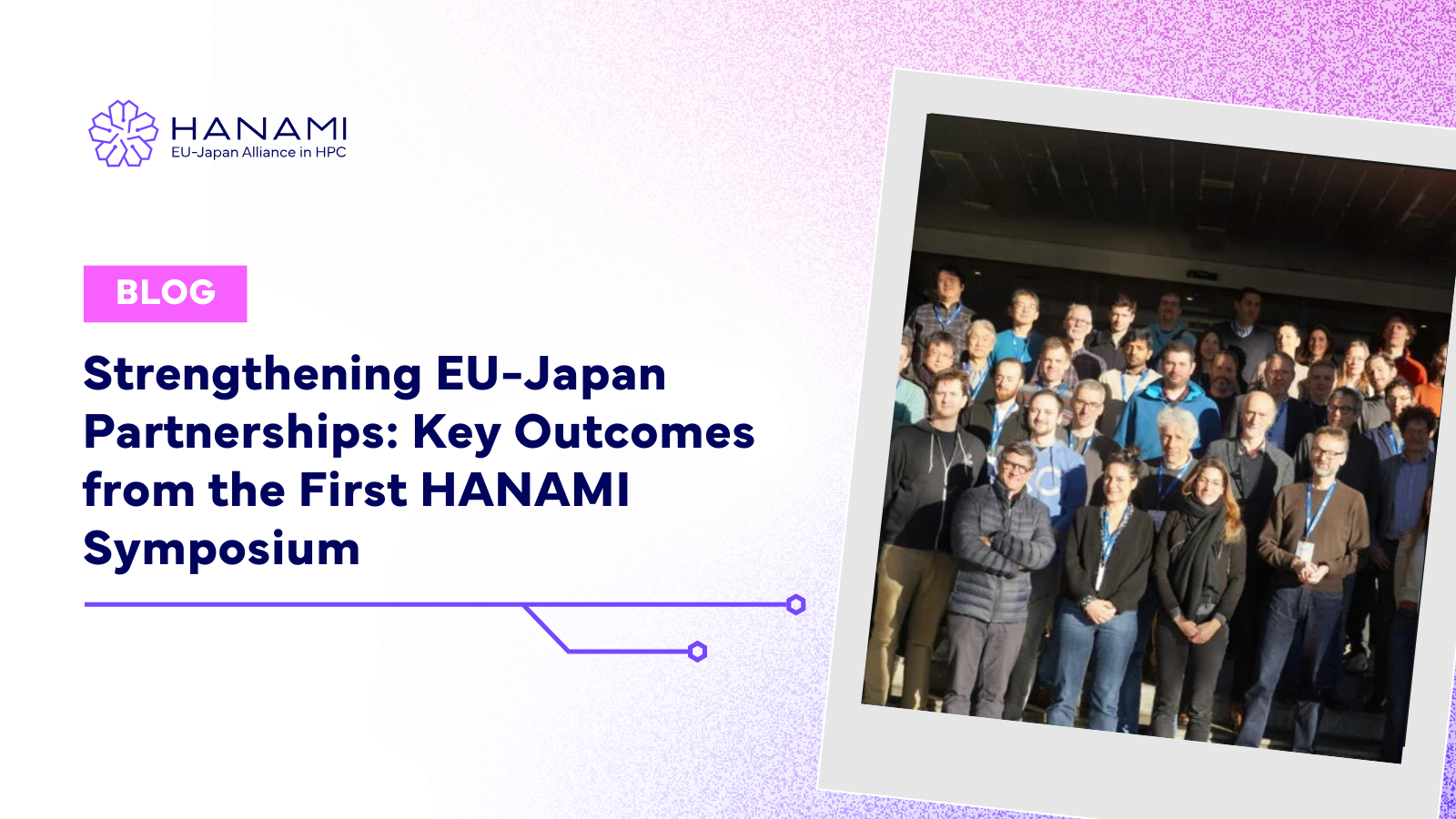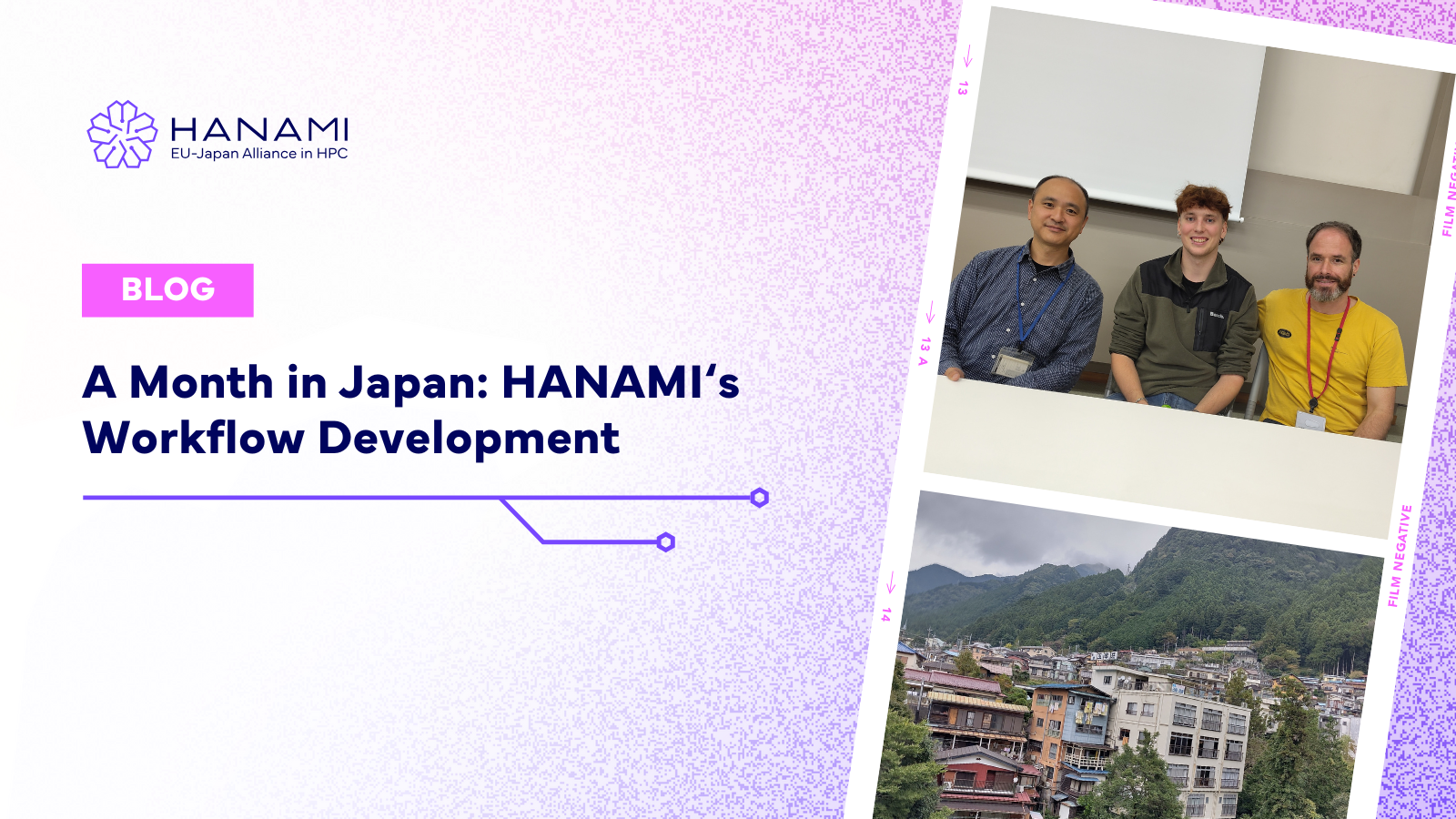Blog
25/07/2025
Is it possible to collaborate across continents (and cultures) in science?
By Marta Alerany Solé, Research Engineer at the Barcelona Supercomputing Centre (BSC)
From late May to the end of June 2025, I had the opportunity to spend six weeks working in Yokohama (Japan) as part of the HANAMI project, a research collaboration between European and Japanese institutions. I joined a team at the Japan Agency for Marine-Earth Science and Technology (JAMSTEC), where I worked alongside researchers developing cutting-edge climate models. This experience allowed me to contribute to ongoing research, develop valuable skills, and build connections that will hopefully lead to future collaborations.
Within HANAMI, I contribute to Work Package 4 – Climate and Weather Modelling. As a research engineer at the Barcelona Supercomputing Centre (BSC), my role is to help develop practical tools and strategies that ensure climate models produce accurate results that are consistent with real-world observations, and that these results can be tested, repeated, and trusted by others. Why does this matter? We can think of climate models as virtual versions of our planet Earth, which scientists can use to understand how weather and climate behave today, and how they might change in the future. But for these models to be truly useful, we need to ensure that they perform well, both in terms of reproducibility (can others repeat the results?) and scientific performance (how closely do the results match the real world?). These two concepts are at the core of my work in HANAMI, where I aim to make the assessment of these models’ characteristics easier and more efficient.
Why Yokohama? Why now?
JAMSTEC is one of Japan’s leading research centres for ocean and climate science. I was based in their Research Centre for Environmental Modelling and Application (CEMA), under the supervision of researcher Chihiro Kodama. He is part of the Cloud-Resolving Model Development and Application Group (CRM-DAG), a group focused on building and improving high-resolution climate simulations. With many years of experience in the field, Chihiro has played a key role in the development of NICAM, a global cloud-resolving model capable of running at an impressive 3.5-km resolution and getting finer. Models like NICAM are powerful tools that help us understand how the Earth’s climate works and how it might evolve in the future.
One of the group’s main goals is to simulate extreme weather events, such as tropical cyclones (powerful storm systems that require precise modelling due to their high societal impact), with high accuracy. To do this effectively, researchers need reliable ways to evaluate their simulations: Are they realistic? Do they match real-world observations? That‘s where my role within HAMANI came in.

Collaborating at JAMSTEC
Chihiro’s guidance was essential not only for my day-to-day work but also in helping me connect with key researchers across JAMSTEC and beyond. Thanks to his extensive network, I had fruitful discussions with several leading researchers. Among others, I had the chance to meet Hiroaki Tatebe, a leader developer of the MIROC model at JAMSTEC. MIROC (Model for Interdisciplinary Research on Climate) is one of Japan’s flagship climate models, used to simulate global climate patterns arising from the interaction between various Earth systems, including the atmosphere, ocean, and land. In our conversation, he pointed me toward the climate variables, such as air temperature or sea ice coverage, that are most relevant in their assessment workflows. In this context, workflows refer to organised, step-by-step processes involved in setting up, running, and analysing the results of climate simulations. These workflows are essential to model development, as many model iterations are required to achieve accurate results, and having a clear pathway ensures reproducibility and efficiency.
I also met with Daisuke Takasuka, an assistant professor at Tohoku University, who shared insightful metrics used to analyse convection (the vertical movement of heat and moisture in the atmosphere that drives storm systems) and precipitation. High-resolution models are necessary to properly simulate fine-scale weather features like these.
Being there in person also facilitated many valuable discussions with researchers within the CRM-DAG group itself. I am particularly grateful to the group leader, Tomoe Nasuno, who helped us identify new climate phenomena to study, especially those relevant to the Asian-Pacific region, such as monsoonal variability. I also benefited greatly from the expertise of researcher Masuo Nakano, who specialises in intraseasonal phenomena (events that evolve over weeks to a few months). His input was crucial when implementing and validating metrics related to tropical cyclones.
Overall, I was impressed by the team’s depth of expertise and high level of specialisation. Their degrees and careers are often focused on very specific topics, quite different from the broader training we typically receive in Spain. Automation tools that streamline climate simulation and evaluation workflows, like Autosubmit (a workflow manager developed at the BSC), sparked great interest. There was a general enthusiasm to discuss workflows and metrics, especially given how manual most of their current work still is.

Sharing our work
During my stay, I had several opportunities to present our work and gather feedback:
- At JAMSTEC’s monthly CEMA seminar, I introduced HANAMI, the concept of automated workflows, and how we’re building a standard approach to evaluate climate models. The response was overwhelmingly positive, with many researchers interested in the automation aspect.
- At the Japan Geosciences Union (JpGU) Meeting in Chiba, I gave a talk during a session organised by one of our HANAMI colleagues, Hisashi Yashiro. Besides, it was inspiring to learn about other fields, such as space weather and extreme events, that don’t usually overlap with our daily.
- Finally, at a workshop in Kobe, I introduced the work of BSC’s Earth Sciences department during an event celebrating the continued partnership between RIKEN and our home institution, BSC. It was a great reminder of the value of international collaboration.
A few challenges (and many rewards)
Getting to Japan wasn’t easy, as preparing for the stay was unexpectedly difficult. The centre’s policies were changing due to global security concerns, which complicated the already complex bureaucratic process. Paperwork and approvals took much longer than expected. In fact, we only received the final signature on my mobility agreement one week before the scheduled start of the stay, leaving us with just a few days to arrange housing and book flights.
Through it all, Chihiro’s support was invaluable. Despite the stress, everything eventually fell into place and, in hindsight, it was worth every hurdle. The people at JAMSTEC were kind, welcoming, and eager to collaborate, and the research environment was incredibly motivating.
Life in Yokohama and beyond
Although the weekdays were intense, I made the most of the weekends, with help from local colleagues and previous BSC visitors who shared great tips. I explored Tokyo’s neighbourhoods, hiked Mount Takao, and visited the breathtaking shrines in Nikko. I even stayed in a traditional ryokan, relaxed in an onsen, and attended a tea ceremony.
After the research stay, I took a week of vacation that allowed me to venture to areas further away from Tokyo. Everywhere I was truly amazed by the spectacular natural scenery and by how deeply traditions are preserved, whether through museums, historical sites, or centuries-old villages.

Final thoughts
I joined BSC and the HANAMI project just over a year ago, and while the project is all about international collaboration, in-person interactions with our Japanese partners have been rare due to budget constraints. Even online meetings are challenging to arrange because of the time zone differences. This visit to JAMSTEC was a rare and precious opportunity, not only to our research but also to learn from a community with highly specialised expertise and foster relationships that I hope will grow into deeper collaborations.
I learned so much from my Japanese colleagues, not just about, but about how they work and solve problems. Their passion, depth of knowledge, and openness to new ideas were truly inspiring. I returned home with new tools, fresh perspectives, and meaningful scientific friendships. I’m excited to build on the work we started together.
